When you’re building a machine learning model you’re faced with the bias-variance tradeoff, where you have to find the balance between having a model that:。 A model that is very expressive has a low bias, but it can also be too complex. While a model that generates predictions that aren’t too far off from the true value has low variance.。 When the model is too complex and tries to encode more patterns from the training data than it’s actually necessary, it will start picking up on noise. Since it’s already going beyond the real patterns of the data, the model is。 overfitting 。the data.。 Overfitting usually happens when you have a small training set, too small to showcase all the nuance and patterns in the data. With only a small amount of data to learn from, the model ends up hyper-focusing only on the patterns it can 。see 。in the training set. As a consequence, 。the model is not generalizable。, meaning it won’t be very good at predicting the targets of data it has never 。seen 。before.。 An overfit model is also a non-generalizable model, because it’s fine tuned to predict the targets of the data in the training set.。 This is where regularization comes in! You can use regularization techniques to control overfitting and create a model with high predictive accuracy while keeping it as simple as possible.。 In practice, regularization tunes the values of the coefficients. Some coefficients can end up with such a negligible contribution to the model or even be equal to zero and you can confidently ignore them in your model. That’s why regularization techniques are also called 。shrinkage 。techniques.。 Regularization techniques are also called 。shrinkage techniques, because they shrink the value of the coefficients. Some coefficients can be shrunk to zero.。 Even though it’s commonly used for linear models, regularization can also be applied to non-linear models.。 Now that you’re spending more time at home, you can actually see how much your dog naps!。 The routine doesn’t change much day-to-day, but you notice the nap duration varies, depending on what they do or who they interact with.。 Wouldn’t it interesting if you could predict how long your dog will nap tomorrow? After giving it some thought, you can think of four main factors that affect your dog’s nap duration:。 Some of these activities and interactions may create anxiety, others just sheer excitement. Altogether they affect your dog’s energy levels and, consequently, how much they will nap during the day.。 Since you want to predict your dog’s nap duration, you start thinking about it as a multivariate linear model.。 The different factors that affect nap duration are the independent variables, while the nap duration itself is the dependent variable.。 [Read: How do you build a pet-friendly gadget? We asked experts and animal owners]。 In machine learning terminology, the independent variables are 。features。 and the dependent variable, what you want to predict, is the model 。target。.。 Looking at this nap duration model, 。Beta 0。 is the 。intercept。, the value the target takes when all features are equal to zero.。 The remaining betas are the unknown 。coefficients。 which, along with the intercept, are the missing pieces of the model. You can observe the outcome of the combination of the different features, but you don’t know all the details about how each feature impacts the target.。 Once you determine the value for each coefficient you know the direction, either positive or negative, and the magnitude of the impact each feature has in target.。 With a linear model, you’re assuming all features are independent of each other so, for instance, the fact that you got a delivery doesn’t have any impact on how many treats your dog gets in a day.。 Additionally, you think there’s a linear relationship between the features and the target.。 So, on the days you get to play more with your dog they’ll get more tired and will want to nap for longer. Or, on days when there are no squirrels outside your dog won’t need to nap as much, because they didn’t spend as much energy staying alert and keeping an eye on the squirrels’ every move.。 With the general idea of the model in your mind, you collected data for a few days. Now you have real observations of the features and the target of your model.。 But there are still a few critical pieces missing, the coefficient values and the intercept.。 One of the most popular methods to find the coefficients of a linear model is Ordinary Least Squares.。 The premise of Ordinary Least Squares (OLS) is that you’ll pick the coefficients that minimize the 。residual sum of squares。, i.e., the total squared difference between your predictions and the observed data[1].。 With the residual sum of squares, not all residuals are treated equally. You want to make an example of the times when the model generated predictions too far off from the observed values.。 It’s not so much about the prediction being too far off above or below the observed value, but the magnitude of the error. You square the residuals and penalize the predictions that are too far off while making sure you’re only dealing with positive values.。 With residual sum of squares, it’s not so much about the prediction being too far above or below the observed value, but the magnitude of that error.。 This way when RSS is zero it really means prediction and observed values are equal, and it’s not just the bi-product of arithmetic.。 In python, you can use ScikitLearn to fit a linear model to the data using Ordinary Least Squares.。 Since you want to test the model with data it was not trained on, you want to hold out a percentage of your original dataset, into a test set. In this case, the test dataset sets aside 20% of the original dataset at random.。 After fitting a linear model to the training set, you can check its characteristics.。 The coefficients and the intercept are the last pieces you needed to define your model and make predictions. The coefficients in the output array follow the order of the features in the dataset, so your model can be written as:。 It’s also useful to compute a few metrics to evaluate the quality of the model.。 R-squared, also called the coefficient of determination, gives a sense of how good the model is at describing the patterns in the training data, and has values ranging from 0 to 1. It shows how much of the variability in the target is explained by the features[1].。 For instance, if you’re fitting a linear model to the data but there’s no linear relationship between target and features, R-squared is going to be very close to zero.。 Bias and variance are metrics that help balance the two sources of error a model can have:。 This linear model has a relatively high variance. Let’s use regularization to reduce the variance while trying to keep bias a low as possible.。 Regularization is a set of techniques that improve a linear model in terms of:。 With Ordinary Least Squares you want to minimize the Residual Sum of Squares (RSS).。 But, in a regularized version of Ordinary Least Squares, you want to 。shrink 。some of its coefficients to reduce overall model variance. You do that by applying a penalty to the Residual Sum of Squares[1].。 In the 。regularized 。version of OLS, you’re trying to find the coefficients that minimize:。 The 。shrinkage penalty。 is the product of a tuning parameter and regression coefficients, so it will get smaller as the regression coefficient portion of the penalty gets smaller. The tuning parameter controls the impact of the 。shrinkage penalty 。in the residual sum of squares。.。 The 。shrinkage penalty。 is never applied to Beta 0, the intercept, because you only want to control the effect of the coefficients on the features, and the intercept doesn’t have a feature associated with it. If all features have coefficient zero, the target will be equal to the value of the intercept.。 There are two different regularization techniques that can be applied to OLS:。 Ridge Regression minimizes the sum of the square of the coefficients.。 It’s also called L2 norm because, as the tuning parameter 。lambda。 increases the norm of the vector of least squares coefficients will always decrease.。 Even though it 。shrinks 。each model coefficient in the same proportion, Ridge Regression will never actually 。shrink 。them to zero.。 The very aspect that makes this regularization more stable, is also one of its disadvantages. You end up reducing the model variance, but the model maintains its original level of complexity, since none of the coefficients were reduced to zero.。 You can fit a model with Ridge Regression by running the following code.。 Here 。lambda。, i.e., alpha in the scikit learn method, was arbitrarily set to 0.5, but in the next section you’ll go through the process of tuning this parameter.。 Based on the output of the ridge regression, your dog’s nap duration can be modeled as:。 Looking at other characteristics of the model, like R-squared, bias , and variance, you can see that all were reduced compared to the output of OLS.。 Ridge regression was very effective at 。shrinking。 the value of the coefficients and, as a consequence, the variance of the model was significantly reduced.。 However, the complexity and interpretability of the model remained the same. You still have four features that impact the duration of your dog’s daily nap.。 Let’s turn to Lasso and see how it performs.。 Lasso is short for 。Least Absolute Shrinkage and Selection Operator。 [2], and it minimizes the sum of the absolute values of the coefficients.。 It’s very similar to Ridge regression but, instead of the L2 norm, it uses the L1 norm as part of the 。shrinkage penalty。. That’s why Lasso is also referred to as L1 regularization.。 What’s powerful about Lasso is that it will actually 。shrink。 some of the coefficients to zero, thus reducing both variance and model complexity.。 Lasso uses a technique called soft-thresholding[1]. It 。shrinks 。each coefficient by a constant amount such that, when the coefficient value is lower than the 。shrinkage constant。 it’s reduced to zero.。 Again, with an arbitrary 。lambda。 of 0.5, you can fit lasso to the data.。 In this case, you can see the feature 。squirrels was 。dropped from the model, because its coefficient is zero.。 With Lasso, your dog’s nap duration can be described as a model with three features:。 Here the advantage over Ridge regression is that you ended up with a model that is more interpretable, because it has fewer features.。 Going from four to three features is not a big deal in terms of interpretability, but you can see how this could extremely useful in datasets that have hundreds of features!。 So far the 。lambda。 you used to see Ridge Regression and Lasso in action was completely arbitrary. But there’s a way you can fine-tune the value of 。lambda。 to guarantee that you can reduce the overall model variance.。 If you plot the root mean squared error against a continuous set of 。lambda 。values, you can use the 。elbow technique。 to find the optimal value.。 This graph reinforces the fact that Ridge regression is a much more stable technique than Lasso. You can see the error starts off very high for the starting value of 。lambda。 = 0.01, but then it stabilizes right around 2.5. So, for Ridge Regression, a 。lambda。 of 2.5 would be the optimal value, since the error increases slightly after that.。 As for Lasso, there’s a bit more variation. Zooming in to get more detail, the error actually starts off by getting worse, when lambda is between 0.15 and 0.2, before it stabilizes around lambda = 15.。 Here’s how you can create these plots in Python.。 We can verify this by fitting the data again, now with more targeted values.。 You can confirm that for Lasso the variance first gets worse but then gradually gets better and stabilizes around 。lambda。 equal to 15. At that point, Lasso dropped 。squirrels。 from the model and the overall variance is significantly lower when compared than with lower values of 。lambda。.。 Using Lasso you ended reducing significantly both variance and bias.。 With Ridge Regression the model maintains all features and, as 。lambda。 increases, overall bias and variance gets lower. Like you noticed in the chart, when 。lambda 。is greater than 2.5 bias continues to get lower, but variance actually gets worse.。 Choosing the type of regularization technique will depend on the characteristics of your model, as well as, the trade-offs you’re willing to make in terms of model accuracy and interpretability.。 Your model has a small number of features that stand out, i.e., have high coefficients, while the rest of the features have coefficients that are negligible.。 In this case, Lasso will pick on the dominant features and 。shrink 。the coefficients of the other features to zero.。 Your model has a lot of features and all have a relatively similar 。weight 。in the model, i.e., their coefficient values are very similar.。 Depending on the problem you’re working on, it might be more useful to have a model that’s more interpretable compared to lower variance, yet overly complex, model. At the end of the day, it’s all about trade-offs!。 Even though this was a very small dataset, the impact and effectiveness of regularization were clear:。 Hope you enjoyed learning how regularization can help improve the quality of a machine learning model.。 [1] Gareth James, Daniela Witten, Trevor Hastie, and Robert Tibshirani. 2014.。An Introduction to Statistical Learning: with Applications in R。. Springer。 [2] Tibshirani, R. (1996). Regression shrinkage and selection via the lasso. J. Royal. Statist. Soc B., 58, 267–288。 This article was originally published by 。Carolina Bento 。on Towards Data Science. You can read the piece here. 。Overfitting。
The year of the (dog) nap。
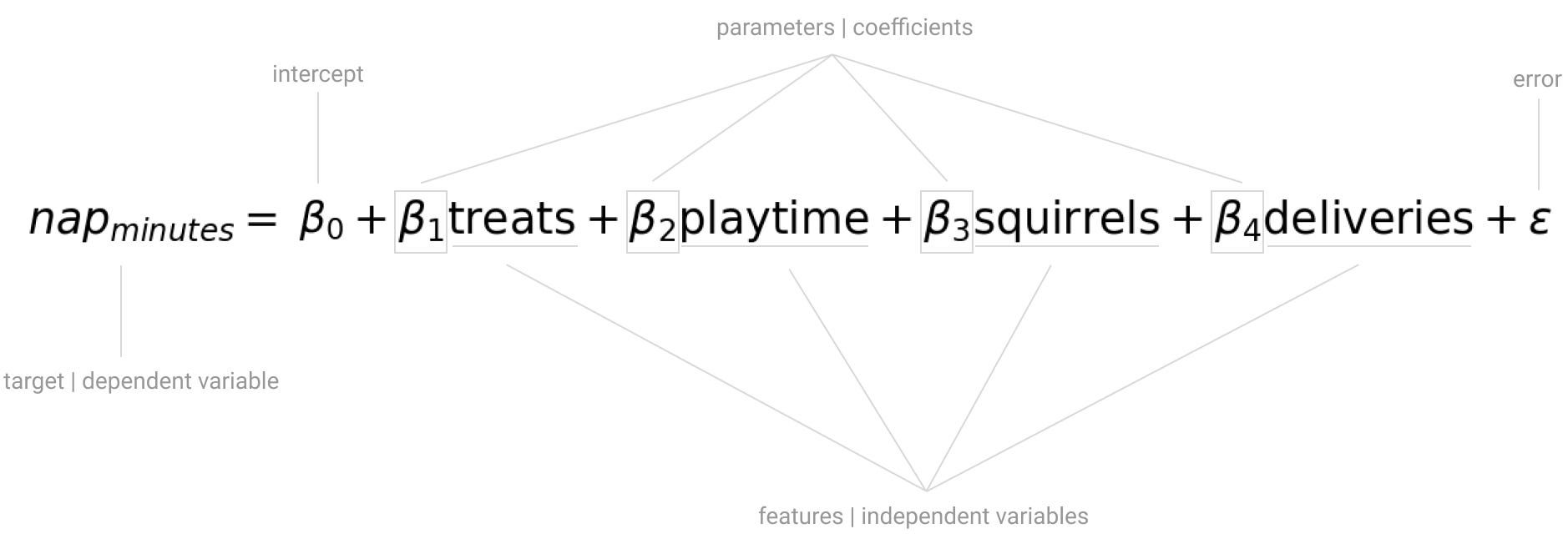
For how long will your dog nap tomorrow?
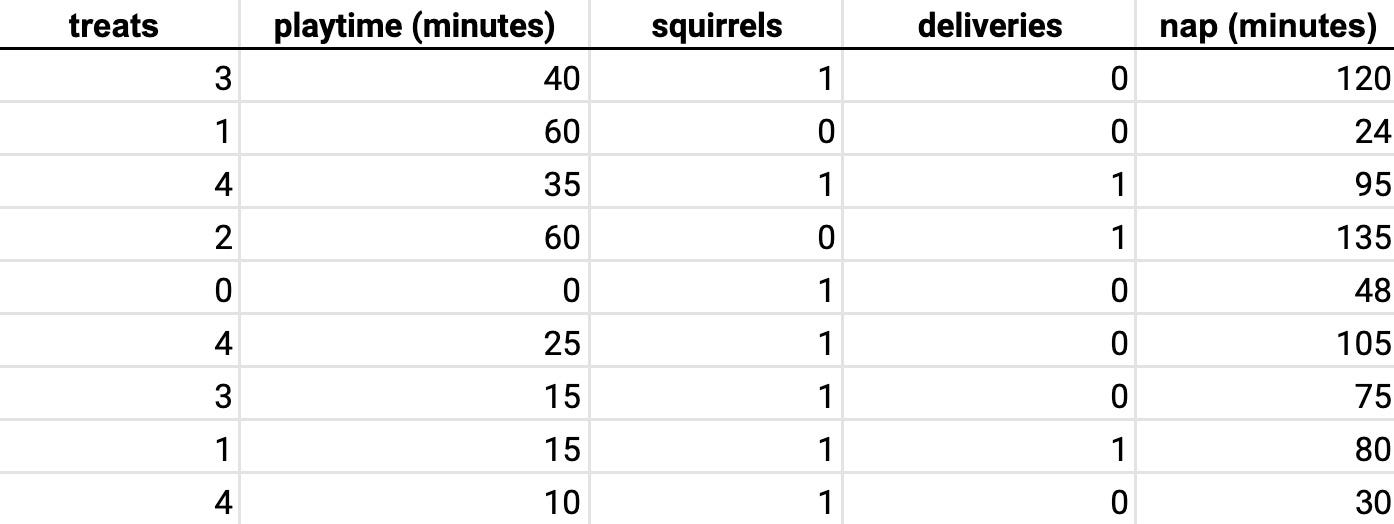
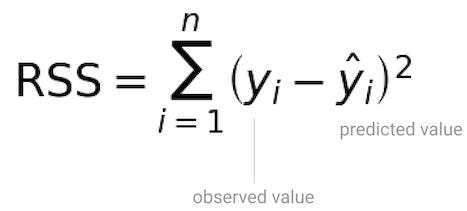
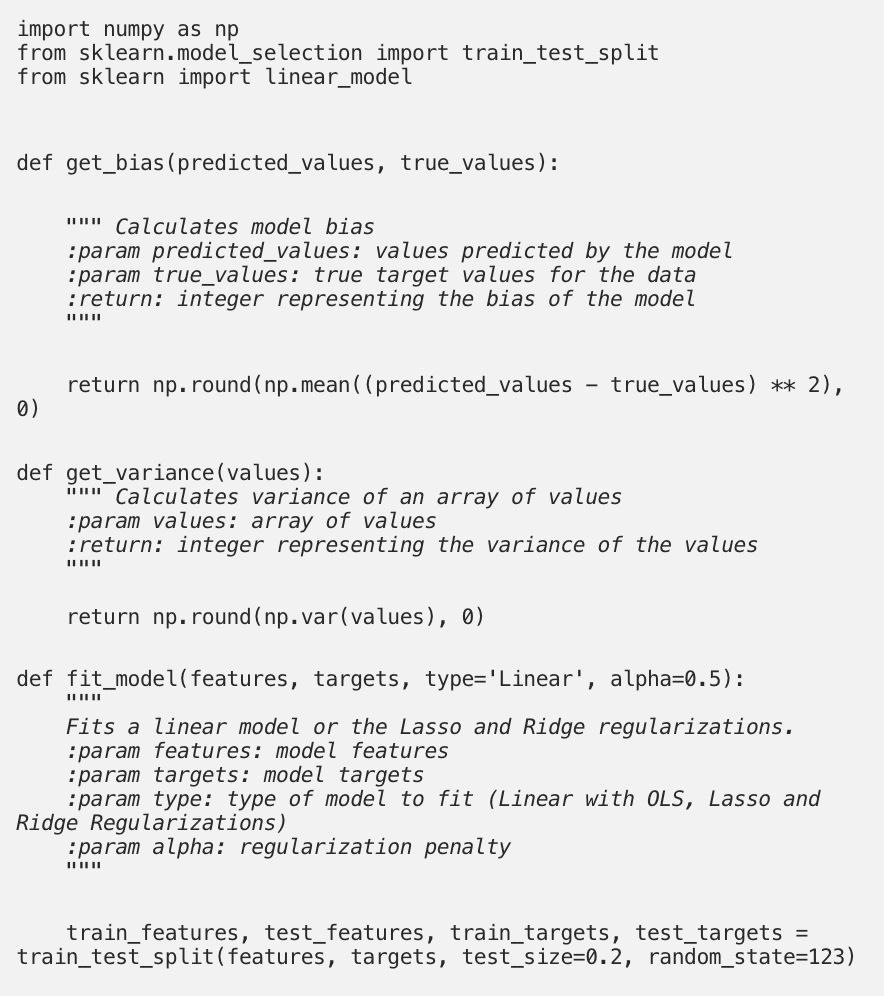
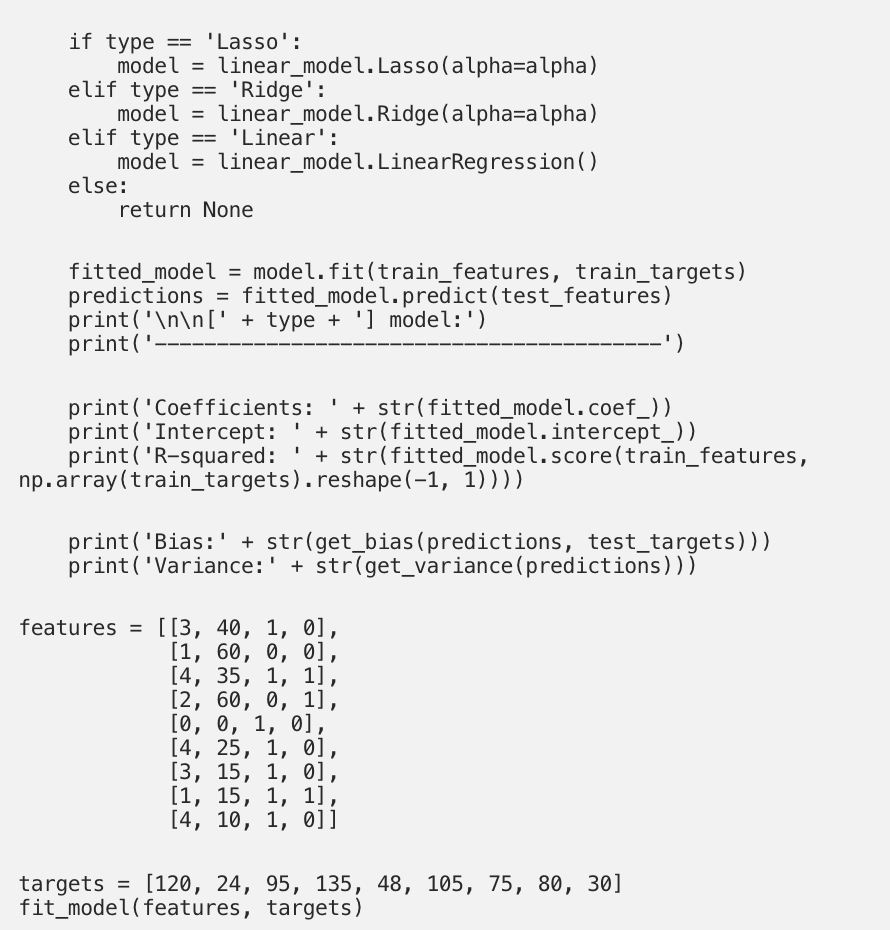
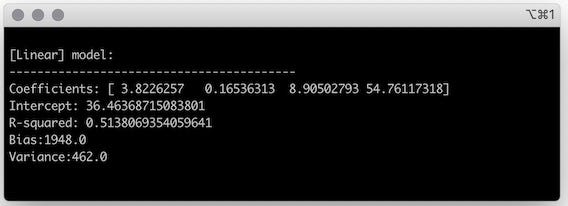

Model regularization。


Ridge Regression。

fit_model(features, targets, type='Ridge')。

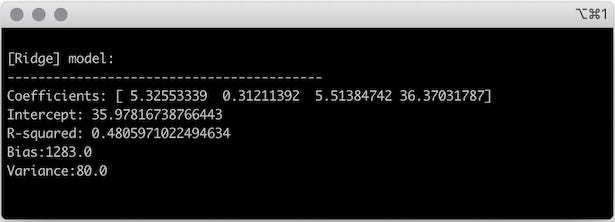
Lasso。


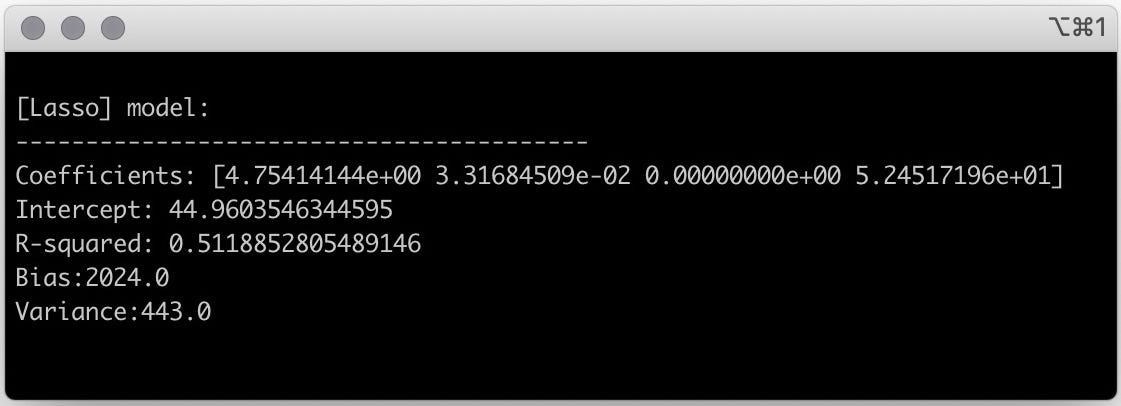

Finding your optimal lambda。
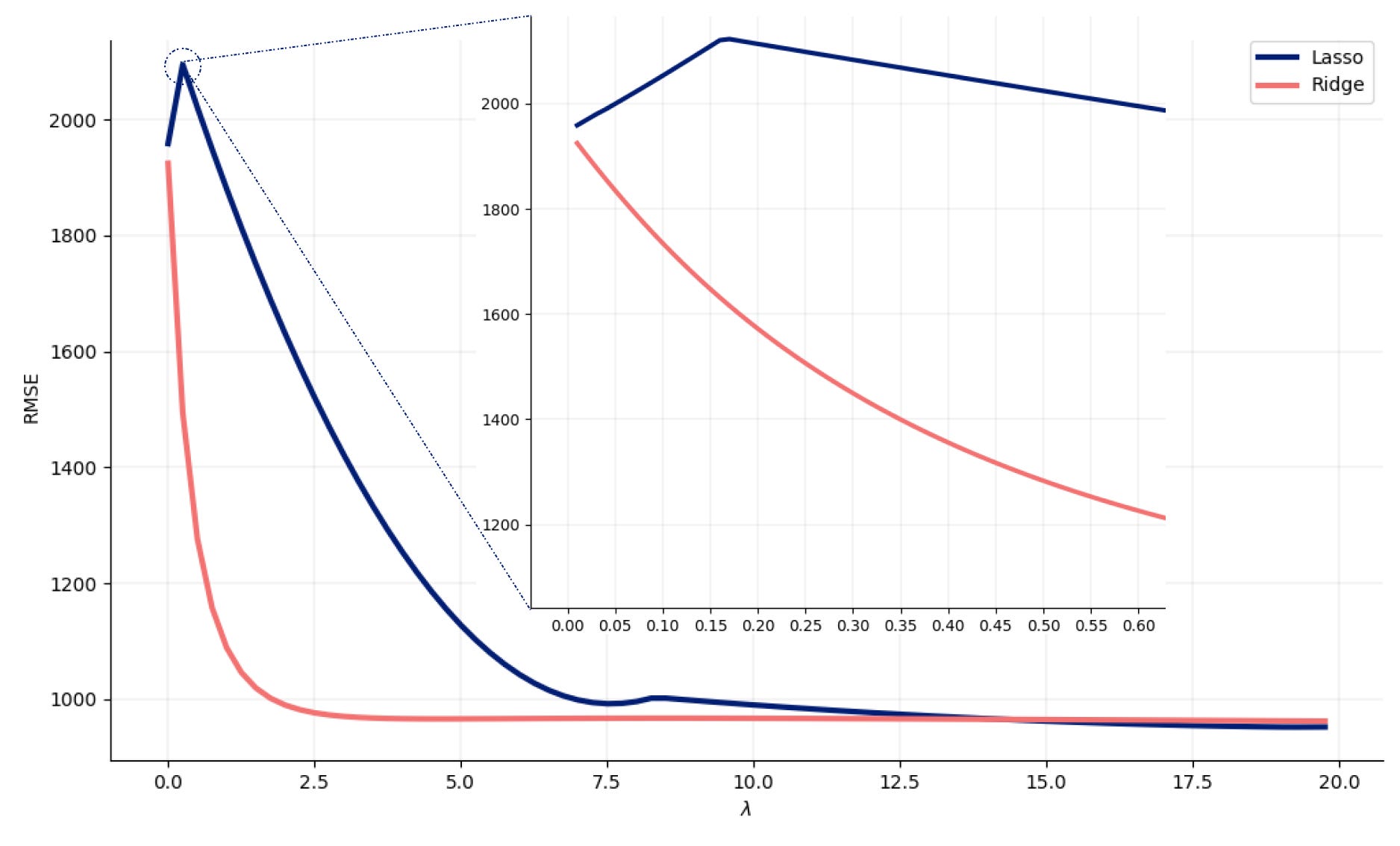
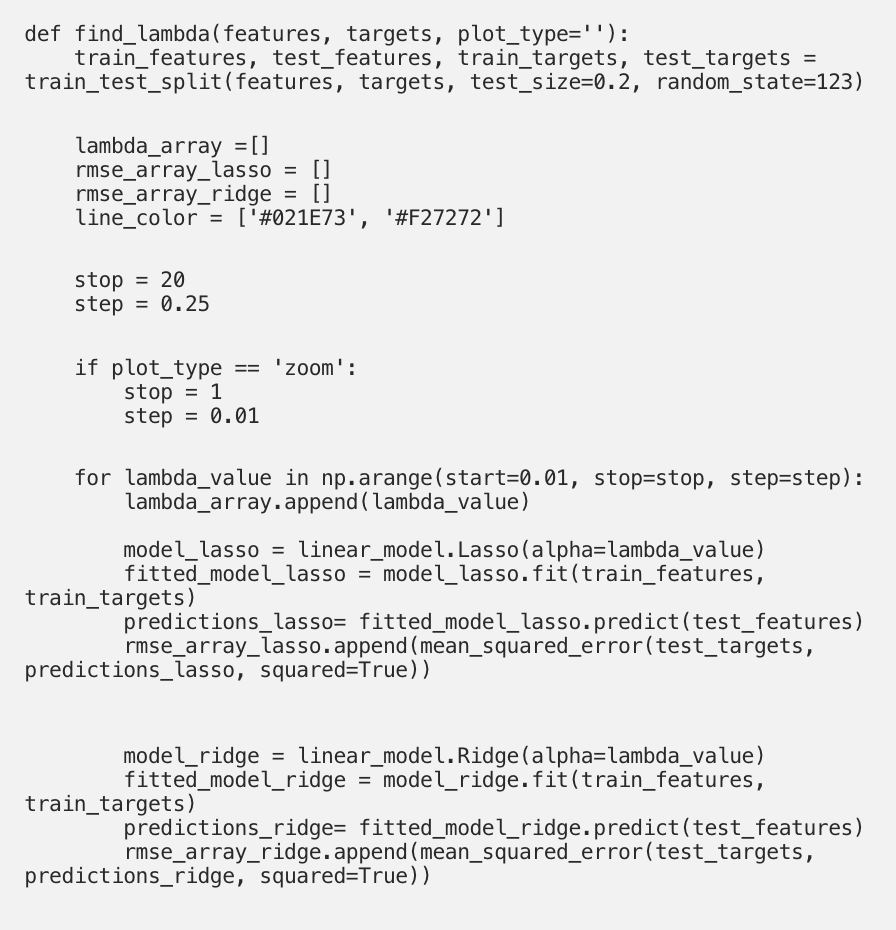
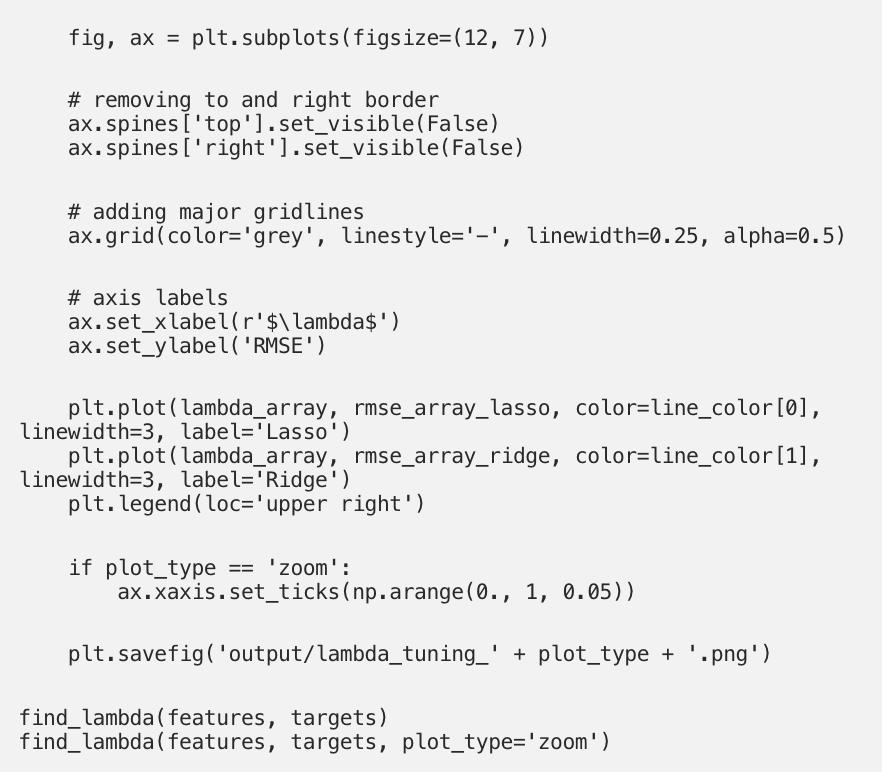


When to use Lasso vs Ridge?
Use Lasso when …。
Use Ridge Regression when …。
Conclusion。
References。
How to turn your dog’s nap time into a regularized linear model
••
(1272)
Inside China’s plan to lead the world in AI
Previous2024-05-18 14:55
How NASA is using AI in the hunt for life on Mars
Next 2024-05-18 13:56
